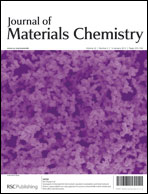Non-volatile organic field-effect transistor memory comprising sequestered metal nanoparticles in a diblock copolymer film†
Abstract
In this study, we fabricated p-channel-type non-volatile organic field-effect transistor (OFET) memory devices featuring an asymmetric PS-b-P4VP


 Please wait while we load your content...
Please wait while we load your content...